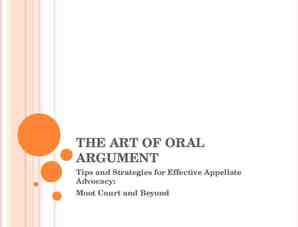Assessing attachment Assessment, Analysis and Planning Further P14 1
22 Slides1,014.50 KB
Assessing attachment Assessment, Analysis and Planning Further P14 1
Learning Outcomes To assess the nature and extent of a child’s developmental needs. 2
Key themes The way the child experiences attachment is significant. The experience gives the child a message about their worth. Needs met security enhanced. Needs not met sense of insecurity increases. Early experiences act as a template for later experiences. 3
Attachment theory The study of human relationships Attachment behaviour as survival behaviour. Early attachment relationships serve as a template for later emotional functioning. Language, cognitive and moral development linked with early attachment relationships. 4
Main components Primary attachment relationship. Proximity seeking at times of stress and threat. Secure attachment relationship creates a secure base from which child can explore. Separation protest to regain closeness to attachment figure. Internal working model develops out of early experiences. 5
The ‘arousal-relaxation’ cycle 6
The ‘positive-interaction’ cycle Parent initiates positive interaction with the child Self worth Self esteem Child responds positively 7
The individual child His or her needs should be recognised understood appreciated acknowledged attended to by his or her caregiver. 8
Claiming ‘Claiming behaviours separate the “we’s” and “they’s” of the world.’ (Fahlberg 1994, p30) 9
Secure attachment Certainty that need will be met. Feelings of being loved and cared for. Sense of being able to make things happen or stop things from happening. 10
A child who lives with insecurity may not be sure about one or all of the following whether her or his needs are going to be met; which of the needs are going to be met; who is going to meet those needs; when the needs are going to be met. 11
Caregiver responses may be one or more of the following in responding to the child’s signals of need inconsistent inappropriate inadequate ignoring. 12
Insecure attachment – child’s response to caregiver may be one or all of the following ambivalent: limited confidence in ability to get needs met; reduced trust in caregiving adult; avoidant: displays of need limited and compromised; increasing self reliance; disorganised: alert; seeking attention; hyper sensitive; hyper vigilant. 13
Caregiver’s response Confusion. Reduced confidence in caregiving role. Inappropriate or inadequate meeting of the child’s needs. Refusal to meet the child’s needs. Denial that some or all of the child’s needs have not been met. 14
Compromised caregiving Rhythm of chaos - caregiver preoccupied. Caregiver present but not available. Trauma of absence - no opportunities for the child to be a child. Meaning is the message - attribution of blame. Neglect in the air the children breathe - no time out. 15
Mind mindedness ‘No individual can be understood apart from the relationships in which he or she lives.’ (Howe 2005) The quality of caregiver behaviour at 6 months predicts attachment behaviour at 3 years – early experiences can have a significant impact on a child’s development pathway. 16
Implications for the child’s developing relationships ‘A pattern of attachment established during childhood can be enduring and may eventually become a feature of the way the child, young person and adult interacts with other people the internal working model which develops as a result of early interactions influences later relationships.’ (Daniel et al. 1999, p27) 17
Loss or separation from a relationship ‘Existing relationships are important and must be treated with respect. Even in abusive situations children are likely to have made attachments which have to be taken seriously. Children can always surprise us with the extent of their attachment to people who have apparently treated them with extreme cruelty.’ (Daniel et al. 1999, p37) 18
Child’s response to temporary separation Four phases in the child’s reaction to separation: 1. protest 2. withdrawal 3. detachment 4. recovery on a shallow level. (Howe 1991) 19
Appreciating the importance of relationships Numbness, shock and disbelief. Yearning, searching, pain, tension and misery. Anger and resentment; in some cases guilt. Disorganisation, despair and depression and withdrawal. Adjustment, reorganisation and, if all goes well, resolution. (Fahlberg 1994) 20
Recovering relationships ‘There is great reparative potential in the improvement of existing relationships and the making of new, healthy relationships.’ (Daniel et al. 1999, p37) 21
Further Reading Aldgate, J. and Jones, D. (2006) ‘The place of attachment in childrens’ development.’ In J. Aldgate, D. Jones, W. Rose et al. C. Jeffery (eds) The Developing World of the Child, pp.67-96. London: Jessica Kingsley Publishers. Daniel, B., Wassell, S. and Gilligan R. (2002) Child Development for Child Care and Protection Workers. London: Jessica Kingsley Publishers. (Chapter 2 (pp14-39) Developing relationships) Fahlberg, V. (1994) A Child’s Journey Through Placement. London: British Agencies for Adoption and Fostering. (Chapter 1 (pp13-61) Attachment and Bonding) Howe, D. (2005) Child Abuse and Neglect: Attachment, Development and Intervention. Hampshire: Palgrave MacMillan. (Chapter 11 (pp183-198) Drugs, depression and domestic violence) 22



























